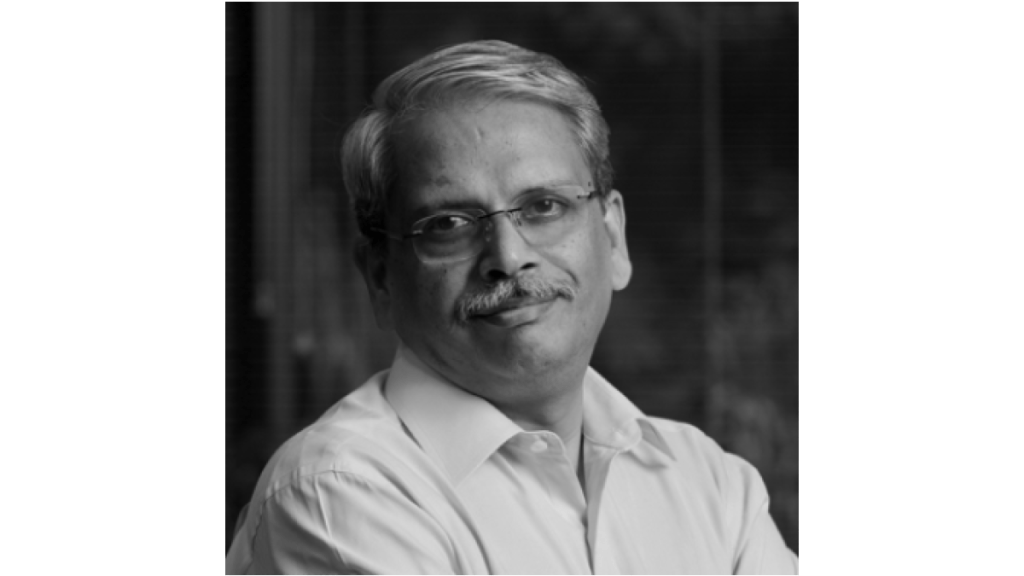In a world where the engine of progress runs on fuel from capitalism, it is not surprising that the rubric of ‘philanthrocapitalism’ gets affixed when discussing the endeavours of socially conscious charitable billionaires. But then, to those who know Kris Gopalakrishnan, it is not how you describe but what you do that really matters.
One of the few corporates from India who has doggedly been pursuing the funding of frontier science research, Kris Gopalakrishnan, the tech guru and chairman at Axilor Ventures but still to many the co-founder of Infosys, is fairly sorted on where to invest research funds and why. “We need to look at where the world will be in five to ten years from now, study the white spaces and work on those areas now.” Not for “trying to indigenously develop technologies that are already available globally” which should just be bought instead, he says, “looking at a five to ten years timeframe and investing accordingly in advance is what I have done personally too and that is why I am investing in brain sciences because the entire world is grappling with understanding the brain, creating new models for computing, understanding neuro degeneration – Alzheimer’s, Parkinsons and dementia,” he says.
Gopalakrishnan shared this and other nuggets of investing wisdom at the just concluded inaugural ISB Insights Forum 2023 held at the verdant and salubrious Mohali campus of the Indian School of Business (ISB).
At the meet that saw some of the finest minds brainstorm on the road ahead, Kris Gopalakrishnan was also felicitated with the ISB Research Catalyst Award. Earlier, speaking at a fireside chat on his vision for a research-driven new India of 2047. This was with Rakesh Bharti Mittal, member ISB board and was moderated by John Reed, South Asia Bureau Chief at the Financial Times.
Last year, speaking to Financial Express Online, Kris Gopalakrishnan said: “Currently, India invests about 0.7 per cent of the Gross Domestic Product (GDP) in research, I would like to see this go to about 3 per cent of the GDP. The government spends about 0.6 per cent of the GDP and I would like to see this go up to 1.5 per cent and the private sector investments must go up from 0.1 per cent to 1.5 per cent.”
Referring to the IT and knowledge industry that Kris Gopalakrishnan represented had achieved a pinnacle of success, it was still not enough to create jobs for the hundreds of millions of Indians and what can drive that cycle of economic growth.
While any economy needed to develop holistically, Gopalakrishnan set the context and the subtext to the India story and said, “I believe India is one of the few countries which is in the 19th, 20th and the 21st centuries at the same time. Today, we have 40 per cent of our population dependent on agriculture, which is still in the 19th century albeit automation is getting to make a difference there but contributing to just 17 per cent of the GDP and growing on an average at around 3 per cent a year dragging down the economy. In the 20th century.”
Then, there was the manufacturing sector, which he said, “was fast transitioning to 21st century. But still contributing to about 17 per cent of the GDP and employing 25 per cent of the population.” But then, it was really the services that drove the rest. “In fact, India is today largely a services economy with the rest of the contribution to GDP coming from the services sector.” By services, Gopalakrishnan clarified, were not just about jobs in IT or pharmaceuticals but also were also about sectors as diverse as construction and infrastructure- building.”
Explaining further, Kris Gopalakrishnan said it is important to “picture where India stood on the development path and you will notice that the focus thus far has been on solutions to meet the basic needs such as poverty reduction or achieving self-sufficiency in foodgrains,” which was achieved through the green revolution though the task ahead is that of moving up the value chain and especially in valued-added products.
Now to move into the orbit of middle income or high income country, he said, “we need to build our own IP because the wealth will be on the IP that we create and own. This being discussed in various platforms, including this forum, and once we decide to do it, we will.”
Gopalakrishnan is clear on who can invest what and why. He said, typically, government and private philanthropy can fund basic research as this tends to be long-term in nature with a long gestation period but industry will ideally fund short-term applied research, where they can see the benefit coming in three to five year timeframe.”
Referring to the “India stack” and the whole digital ID, payment and data management infrastructure that has been created, was a public good that was funded largely by the government and also philanthropy (for example by Gopalakrishnan’s friend and also Infosys co-founder Nandan Nilekani) and this to Gopalakrishnan was a perfect example of a funding backing in a targeted manner. “We will see new models, like the digital public good, emerging,” he said. Now, that may be something to watch out for in the days ahead.

